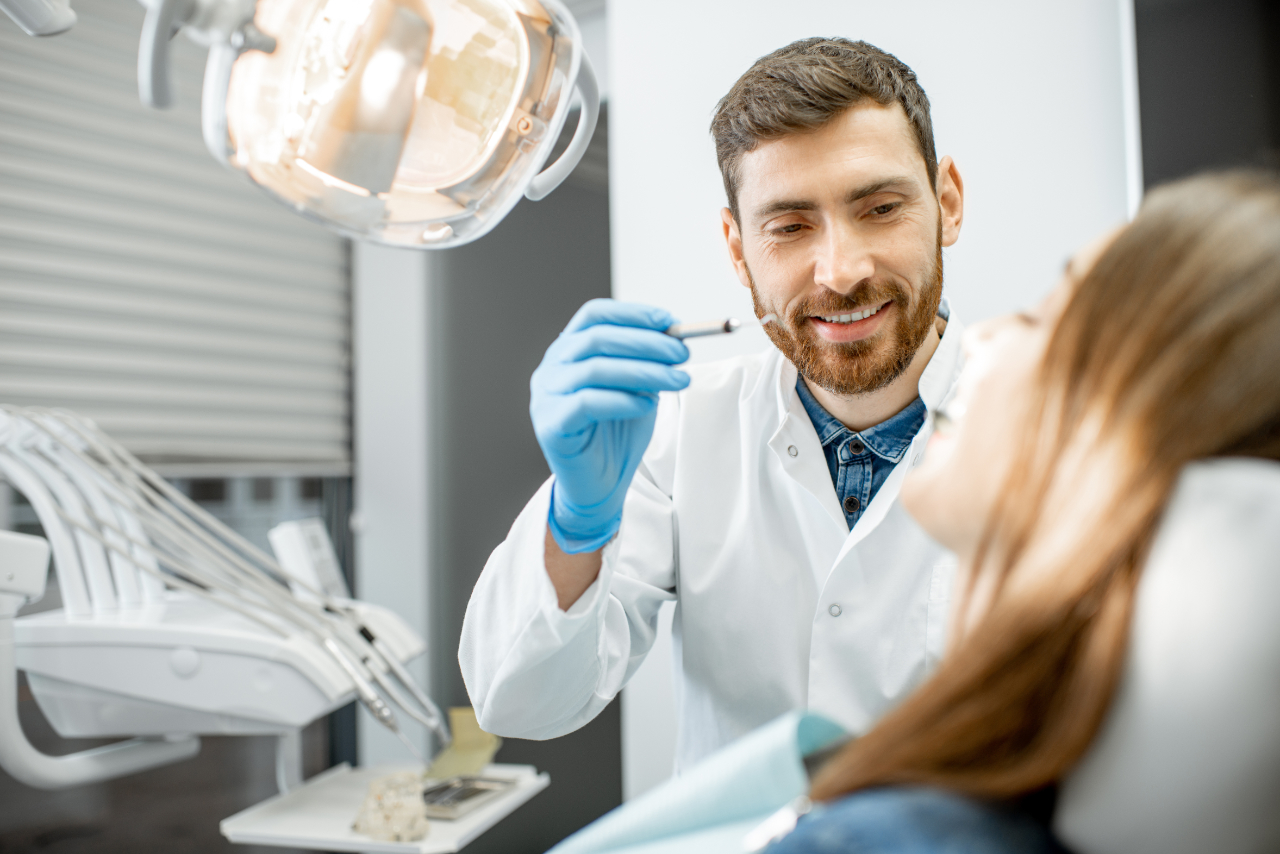Anyone can be affected by mouth cancer, which makes it critical to understand what to stay alert for in-between visits to your dentist. We’re taking this opportunity to dispel some of the most prevailing myths about oral cancer and replace them with life-saving facts.
Myth: Cervical cancer and melanomas kill more people than oral cancer.
Fact: Oral cancer actually kills more people each year than either of those other two conditions. Of the over 50,000 people who receive an oral cancer diagnosis each year, just over half will still be here to talk about it five years later. According to The Oral Cancer Foundation, oral cancer will cause nearly 9,800 deaths this year, breaking down to approximately one death per hour.
Myth: The primary reason for the high rate of deaths from oral cancer is that effective treatment doesn’t exist.
Fact: The primary reason for the high rate of deaths from oral cancer is detecting it too late. Early detection is your best weapon against the ravages of oral cancer. One of the things your dentist and dental hygienist will look for in any routine dental checkup is the mouth or oral cancers, making it even more important to set up regular dental exams with your dentist and cleanings with your dental hygienist. As for how dentists treat oral cancer once they find it, most commonly, oral cancers are treated in the same manner as so many other types of cancer: by, first, surgically removing the cancerous growth, then administering chemotherapy and/or radiation therapy to kill off any cancerous cells that remain.
Myth: The causes and symptoms of oral cancer are unknown.
Fact: Dentists are well aware of what causes oral cancer, or its risk factors, and how to detect it. Any form of tobacco use, whether smoking cigarettes, cigars, or pipes, chewing tobacco, or using snuff or dip, can make you more likely than a non-tobacco user to get oral cancer. Drinking alcohol more than in moderation is known to make people more likely than non-drinkers to get oral cancer. A poor diet lacking sufficient vitamins, minerals, and other nutrients like omega–3 essential fatty acids has been linked in studies to an increased risk of oral cancers. Whatever the cause or risk factor for a case of oral cancer, however, its effects will only continue to progress until you detect it and have a dentist treat it. That’s why a failure to see one’s dentist regularly is the biggest risk factor for oral cancer. Your dentist is more equipped to detect oral cancer than you are, but you can help protect yourself from oral cancer by keeping a lookout for any of the following oral cancer symptoms: - Patches of white or red (or white and red speckled) tissue in the mouth - A small ulcer that resembles a common canker sore - Painless mass or lump you can feel inside the mouth - Difficulty or pain in swallowing, chewing, or speaking - Masses that resemble warts - Persistent hoarseness - Numbness in the region or the face or mouth - Persistent earache
Myth: Oral cancer is not preventable.
Fact: There is much you can do to help prevent oral cancers. Oral cancers begin when damage occurs to the DNA in your mouth cells. Some actions on your part, however, can help increase or decrease your likelihood of getting it. To help prevent getting mouth cancer:
-
Don’t smoke or chew tobacco, use dip or snuff, or any other form of smokeless tobacco.
-
Don’t drink alcohol, or only drink in moderation; avoid binge drinking altogether.
-
Eat a well-balanced and nutrient-rich diet containing plenty of vitamins, minerals, and omega–3 fatty acids daily.
-
Limit your exposure to the sun. Repeated solar exposure raises your chances of getting cancer on your lip, the lower one in particular. When out in the sun, put UV-A/B-blocking lotion on your skin and lips to protect them from the harmful rays of the sun. You can also play an active part in identifying mouth cancer early if it does occur. Firstly, perform an oral cancer self-exam at least every month. Here’s how:
-
Using a mirror and a bright light, look at your lips and the front of your gums and feel both of those areas with your fingers.
-
Tilting your head back, look at the roof of your mouth and feel with your fingers around that area.
-
Gently pull out your cheek to look at the inside of your mouth, your cheek lining, and the gums around your back teeth.
-
Pull your tongue out and examine both the top and bottom surfaces.
-
Examine the back of your pharynx (throat).
-
Feel beneath your lower jaw and feel your neck on both sides for any enlarged lymph nodes or lumps. If you notice any differences in how your mouth appears or any of the symptoms or signs of oral cancer listed above, call your Arlington, VA dentist at Virginia Dental Center for Cosmetic and Family Dentistry immediately.
Whether you notice anything out of the ordinary during your monthly self-exam or not, see your dentist for regular checkups every year at minimum. Sometimes you’ll have symptoms of oral cancer that you can’t spot yourself in a self-screening. According to the American Cancer Society, people over 40 years of age should get an oral cancer screening every year, while people between 20 and 40 years of age should get one at least every three years. If you haven’t gotten an oral cancer screening from your dentist or it’s been a long time since your last one, call us today at Virginia Dental Center for Cosmetic and Family Dentistry to schedule your next dental exam and oral cancer screening.
